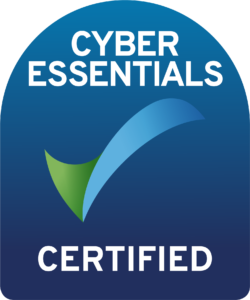
HaloITSM Guides
Documentation to assist with the setup and configuration of the HaloITSM platform
N-Able N-Sight RMM Integration
In this guide we will cover:
- Generating an API Key
- Configuring the Module
- Customer and Site Imports
- Asset Imports
- Alerting
- Halo Integrator
Related Guides:
Generating an API Key
To communicate with N-Able N-Sight RMM via its API, an API Key must be generated in N-Able N-Sight RMM. To do this, go to Settings > General Settings > API. If you do not have an API Key, click the regenerate option. Be mindful that regenerating the API Key may break any other integrations you have setup with N-Able N-Sight RMM in other applications.
Fig 1. Generating an API key.
Be wary that if the API key is linked to the agent key user, and if this user has restricted client groups, it will restrict the returned data. Make sure your API key is either not linked or linked to a user without restrictions.
Configuring the Module
To enable the N-Able N-Sight RMM integration in Halo, go to Configuration > Integrations > Asset Management and Alerting, and enable the module. Once the module has been enabled, click the menu icon for the module to begin configuring it.
Fig 2. Enabling the module.
There are two initial options that must be completed. These are the N-Able N-Sight RMM URL field and the API Key that was retrieved in the previous step. If you have previously used the MaxFocus integration in the old Windows Application, these values will already be populated for you.
Fig 3. Setup.
You can find region-specific URLs via: https://documentation.n-able.com/remote-management/userguide/Content/commitcrm_initialise.htm
Customer and Site Imports
The first step of this integration is to import your Clients and Sites from N-Able N-Sight RMM into Halo. This is a required step, and must be completed at least once before you can import your Assets because the Asset import relies on the N-Able N-Sight ID’s of the Sites.
Fig 4. Customer/Site import.
The first available option is the Top level that you would like Customers imported from N-Able N-Sight RMM to be assigned to. Please note that this field will only display if you have enabled top levels in your Halo Application.
The second option gives you the choice to match existing Customers in your Halo database to Customers being imported from N-Able N-Sight RMM via their name. The N-Able N-Sight RMM ID of the Customer which gets assigned during the initial import will always be checked first, so this feature will only be useful during the first Customer and Site import from N-Able N-Sight RMM and if you already have your Customer list in the Halo database.
As there is minimal Customer and Site information that can be retrieved from N-Able N-Sight RMM, it is not possible to map fields for Customers and Sites in this integration.
Once you’re happy with your configuration, hit the "Import Customers & Sites" button to load your Customer and Site list from SolarWinds RMM into the import screen. You can deselect any unwanted Customers and Sites from the list before the import, but please be aware, if you are importing Customers and Sites via the Halo Integrator, the entire Site list will be imported. Click the Start button to begin importing your chosen Customers and Sites.
Asset Imports
It is also possible to import Assets, specifically Servers and Workstations, from your N-Able N-Sight RMM instance. Before we move onto field mappings, there are three options to consider.
Fig 5. Asset imports.
The first two options allow you to choose an Asset Type for Servers and Workstations. Any Server or Workstation that is imported during the import, will be created under the chosen Asset Type. If you do not wish to import either Servers or Workstations, choose the “Not Set” option. You do not need to add fields to the Asset Type in preparation for the import. This will be done for you during the import automatically based on the field mappings you have chosen.
The third option allows you to choose an Asset field that should be used to match new imported records to existing records. Again, the N-Able N-Sight RMM ID of the Asset which gets assigned to the Asset on its first import is always checked first, so this field is only useful/required if you already have your Asset list in Halo, and you’re importing from SolarWinds RMM for the first time.
IMPORTANT: if you are using this field, the Asset field that you choose must exist as a field mapping. These are configured in the next section.
It is possible to map N-Able N-Sight RMM Asset Fields to both Halo Asset Fields and Halo Custom Fields. To add a new field mapping, press the plus icon in the top right corner of the field mapping table. This will display an input screen with three options.
Fig 6. Field mappings popup.
You should first choose whether you would like to map to an Asset Field, or a Custom Field. Custom Fields must be created before you can create a mapping to them. For Asset Fields, there is an extra option that can be chosen which will create you a new field during the next import. Each N-Able N-Sight RMM field can only be mapped once. When imported, the Assets field value from the N-Able N-Sight RMM field will be saved to the Halo Field that you have mapped it to for that Asset.
Once you’re happy with your configuration, click the "Import Assets" button to load you Asset list from N-Able N-Sight RMM into the importer screen. Just like the Customer and Site import, you can deselect any Assets you do not wish to import before commencing with the import, however, when importing from Halo Integrator, all Assets will be imported. Hit the Start button to begin the import.
Alerting
As with all RMM tools, it is possible to have email alerts sent to a mailbox when a problem is detected with an Asset. To process these alerts and assign them to the correct Assets, add an email rule by completing the 'From Address' and 'Ticket Type for new Alerts'. You can also add your N-Able N-Sight RMM alert types by clicking the button to take you to the alert type list.
Fig 7. Alerting configuration.
To make sure the alert links to the asset inside of Halo you will need to ensure that CheckIDs are enabled in SolarWinds. This will automatically link an asset in Halo to an alert that has come from N-Able N-Sight RMM. Please ensure that the ticket type used for alerts includes the "Asset" field in the field list (Configuration > Tickets > Ticket Types > select the Type you are using > Field List > edit > Add in the Asset field).
Fig 8. Identifiers.
Please check here for instructions on how to set up the alerts in Solarwinds.
Halo Integrator
Once you’re happy with your configuration for the rest of the integration, you can then enable the Halo Integrator application to run the imports for you.
Fig 9. Enabling the integrator.
The Halo Integrator can be downloaded using the link provided. You can also choose whether to automatically import Customers and Sites and/or Assets. If you are not importing Clients and Sites, Assets will only be imported for Sites that have previously been imported from SolarWinds RMM. Each time Halo Integrator imports from N-able N-sight RMM, the last sync date and the last error (if there was one) will be saved to the database so that you can view them within the Halo Web Application.
Once you’ve downloaded the Halo Integrator, you should complete the configuration check on the N-able N-sight RMM tab. General configuration of the Halo Integrator is not covered in this guide.
Fig 10. Halo integrator.
If all points return with a green tick, then you are ready to import. If any points return a red cross, you should revisit the configuration for the integration.
To manually import via the Halo Integrator, switch to the Processes tab and click “Start Processing”. This will process all integrations that are enabled for the Integrator.
Alternatively, if your Halo Integrator application is already configured to run on a schedule, the N-Able N-Sight RMM integration will be checked and processed the next time the Integrator runs. Even if you do not want to import manually within the Halo Web application, it is still recommended that you click the Import Customers/Assets buttons to check that you are happy with your field mappings and that there are no connection issues to N-Able N-Sight RMM, before proceeding with an import via the Halo Integrator.
Popular Guides
- Asset Import - CSV/XLS/Spreadsheet Method
- Call Management
- Creating a New Application for API Connections
- Creating Agents and Editing Agent Details
- Departments and Teams
- Halo Integrator
- Importing Data
- Multiple New Portals with different branding for one customer [Hosted]
- NHServer Deprecation User Guide
- Organisation Basics
- Organising Teams of Agents
- Step-by-Step Configuration Walk Through



